
Wavelength of Sound Waves Class 9 Science Notes by Teachoo
1 Hertz = 1 vibration/second. As a sound wave moves through a medium, each particle of the medium vibrates at the same frequency. This is sensible since each particle vibrates due to the motion of its nearest neighbor. The first particle of the medium begins vibrating, at say 500 Hz, and begins to set the second particle into vibrational motion.
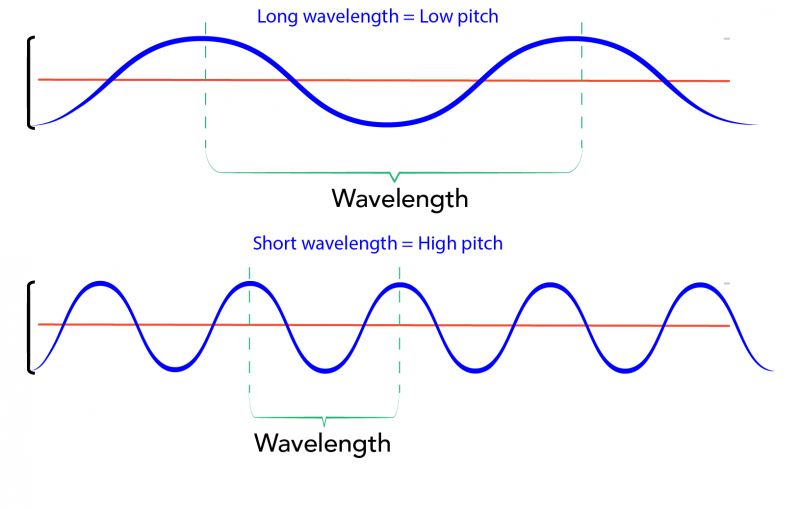
What is Sound and How do we Hear it? Let's Talk Science
PhET Global. DEIB in STEM Ed. Donate. This simulation lets you see sound waves. Adjust the frequency or volume and you can see and hear how the wave changes. Move the listener around and hear what she hears.

Sound Waves 1, QLD Edition Super Challenge (Black line masters) Harleys The Educational
Introduction to waves. Transverse and longitudinal waves are two types of mechanical waves, which involve the transfer of energy through a medium (e.g. water, air, a solid). Learn about transverse and longitudinal waves through the examples of a shaken rope and a sound wave.

Watch these sound videos
Frequency is defined to be one over the period. So, since the period is the number of seconds per oscillation, the frequency is the number of oscillations per second. Frequency has units of one over seconds, and we call one over a second a hertz. Typical sounds have frequencies in the 100s or even 1000s of hertz.
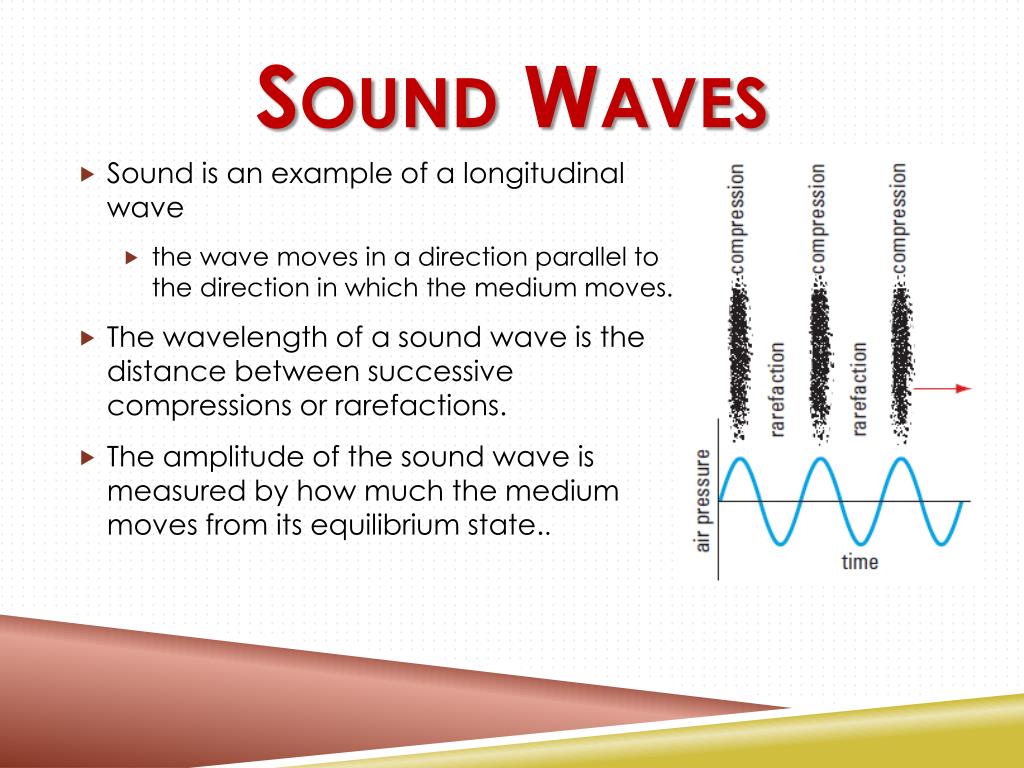
PPT Introduction to Sound PowerPoint Presentation, free download ID2795241
A disturbance is anything that is moved from its state of equilibrium. Some sound waves can be characterized as periodic waves, which means that the atoms that make up the matter experience simple harmonic motion. A vibrating string produces a sound wave as illustrated in Figure 14.2, Figure 14.3, and Figure 14.4.

Sound Wave Diagram Labeled
Season 1. Sound Waves is a series that captures the intimate moments experienced by the world's best surfers during competition. Each episode hones in on a single surfer's journey at a particular Tour stop, giving the viewer an in-depth look at the Championship Tour and what it takes to be a professional surfer. 9:06.
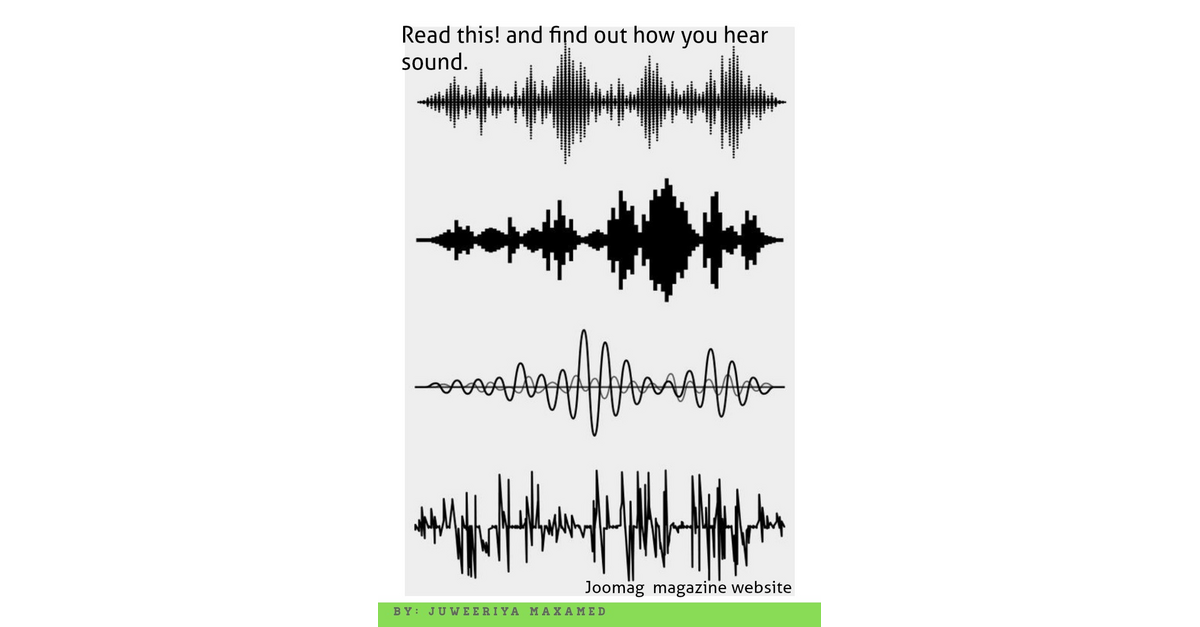
Sound Waves 1
Amplitude Amplitude in light refers to the amount of energy in an electromagnetic wave and its meaning is the same here. Amplitude refers to the distance of the maximum vertical displacement of the wave from its mean position. Larger the amplitude, the higher the energy.
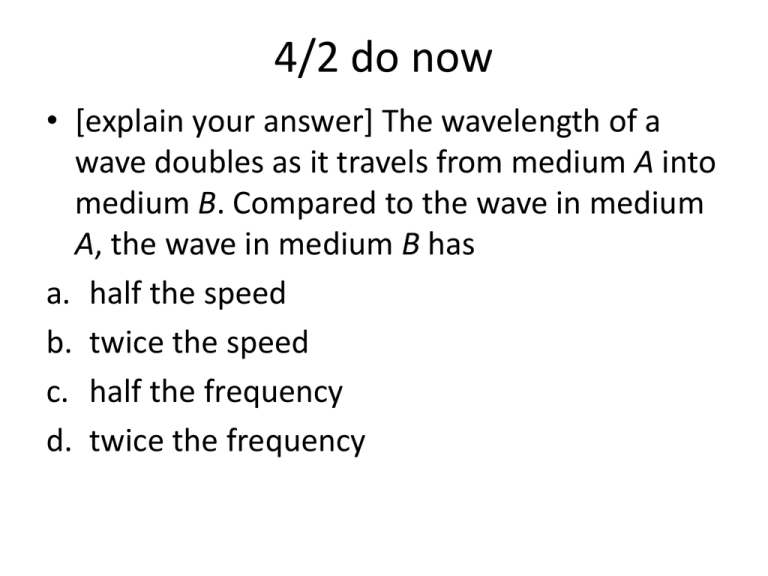
131 sound waves
When the resonant frequency is reached, the glass shatters. A speaker produces a sound wave by oscillating a cone, causing vibrations of air molecules. In (Figure), a speaker vibrates at a constant frequency and amplitude, producing vibrations in the surrounding air molecules.
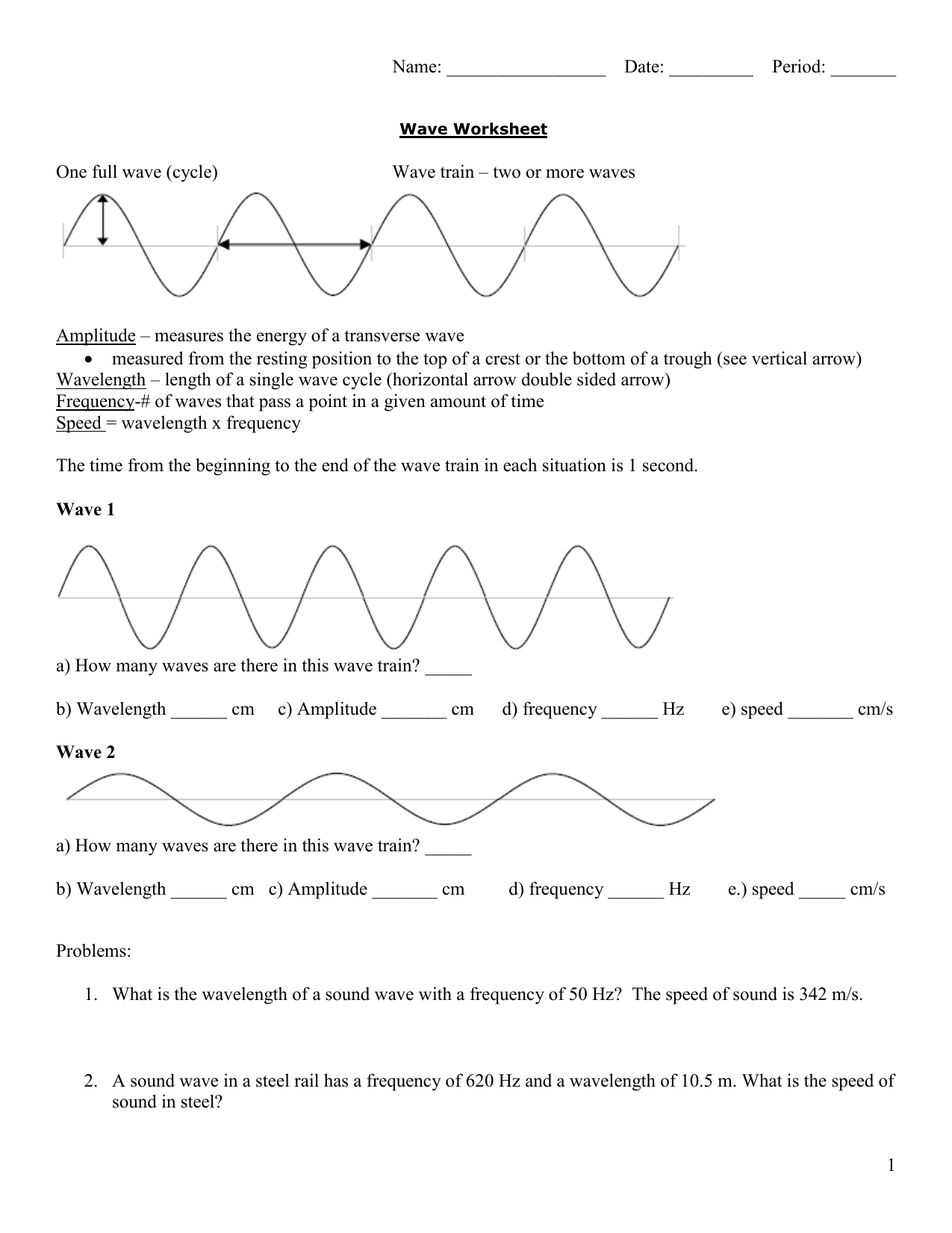
Unveiling the Secrets of Sound Waves Lesson 1 Understanding the AE Sound Wave Phenomenon
MS-PS4-1. Use mathematical representations to describe a simple model for waves that includes how the amplitude of a wave is related to the energy in a wave. [Clarification Statement: Emphasis is on describing waves with both qualitative and quantitative thinking.] MS-PS4-2.

PPT Sound Notes PowerPoint Presentation, free download ID5906639
Sound. When a drum is struck, the drumhead vibrates and the vibrations are transmitted through the air in the form of sound waves. When they strike the ear, these waves produce the sensation of sound. Terms used in the study of sound. Acoustics is the science of sound and of its effects on people. Condensation is a region in a sound wave in.

SOUND WAVES 1 WHAT IS SOUND WAVES Sound
Lesson 1 - The Nature of a Sound Wave Sound is a Mechanical Wave Sound as a Longitudinal Wave Sound is a Pressure Wave Lesson 2 - Sound Properties and Their Perception Pitch and Frequency Intensity and the Decibel Scale The Speed of Sound The Human Ear Lesson 3 Behavior of Sound Waves Interference and Beats The Doppler Effect and Shock Waves

SOUND WAVES 1 WHAT IS SOUND WAVES Sound
Sound is defined as " (a) Oscillation in pressure, stress, particle displacement, particle velocity, etc., propagated in a medium with internal forces (e.g., elastic or viscous), or the superposition of such propagated oscillation. (b) Auditory sensation evoked by the oscillation described in (a)." [4]

Physics Intro or Basics of Sound Waves YouTube
In a transverse wave, such as the wave generated in a stretched rope when one end is wiggled back and forth, the motion that constitutes the wave is perpendicular, or transverse, to the direction (along the rope) in which the wave is moving.

PPT Introduction to Sound PowerPoint Presentation, free download ID5172421
When the resonant frequency is reached, the glass shatters. A speaker produces a sound wave by oscillating a cone, causing vibrations of air molecules. In Figure 17.3, a speaker vibrates at a constant frequency and amplitude, producing vibrations in the surrounding air molecules.

Sound Waves Help Particles Heal Research & Development World
Every five seconds converts to about one mile. The velocity of any wave is related to its frequency and wavelength by v = fλ, v = f λ, 17.3 where v is the speed of the wave, f is its frequency, and λ λ is its wavelength. Recall from Waves that the wavelength is the length of the wave as measured between sequential identical points.

SOUND WAVES 1 WHAT IS SOUND WAVES Sound
General Physics Using Calculus I 17 Sound 17.1 Sound Waves Learning Objectives By the end of this section, you will be able to: Explain the difference between sound and hearing Describe sound as a wave List the equations used to model sound waves Describe compression and rarefactions as they relate to sound